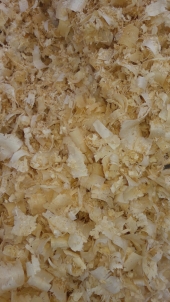




~ Permaculture is enriching...Farming... is just scratching the surface ~




John Daley Bendigo, Australia The Enemy of progress is the hope of a perfect plan
Benefits of rainfall collection https://permies.com/t/88043/benefits-rainfall-collection
GOOD DEBT/ BAD DEBT https://permies.com/t/179218/mortgages-good-debt-bad-debt
 2
2








"When the whole world is running towards a cliff, he who is running in the opposite direction appears to have lost his mind." C.S. Lewis
Visit https://themaineingredient.com for organic, premium dried culinary herbs that are grown, processed, and packaged in the USA.
 1
1








John C Daley wrote:What is that product?
~ Permaculture is enriching...Farming... is just scratching the surface ~




Jim Reiland
 1
1




Since you're up on this, what about wool? We've got a lot of sheep farmers in my area, and I know wool is used in some places as insulation, but have you any info about small-scale processing it for insulation and what its R-value is?Jim Reiland wrote:All good reasons to use plant-based materials when we build.
Visit Redhawk's soil series: https://permies.com/wiki/redhawk-soil
How permies.com works: https://permies.com/wiki/34193/permies-works-links-threads
 4
4




Jim Reiland




 1
1




grant fullmer wrote:I have found hemp hurd in Idaho for a decent price



